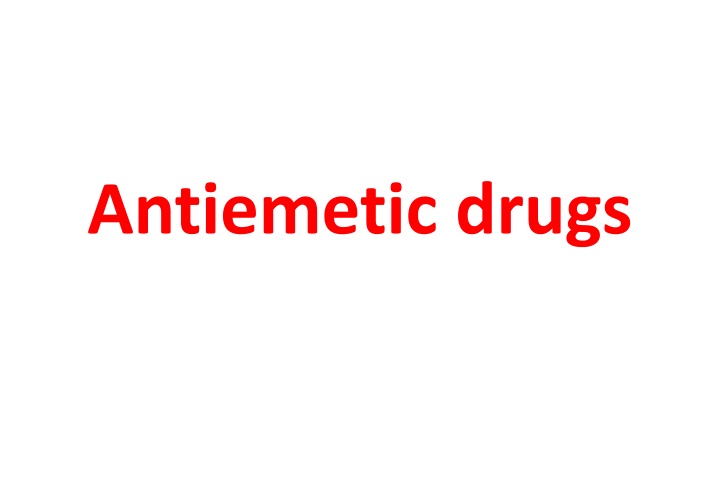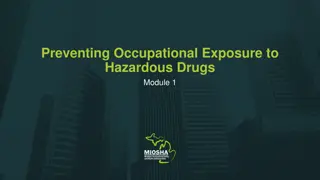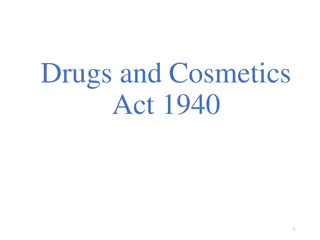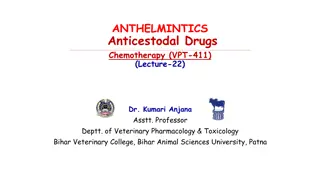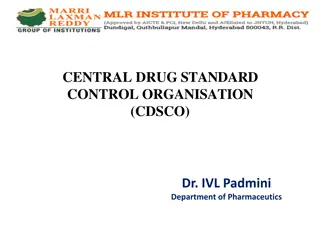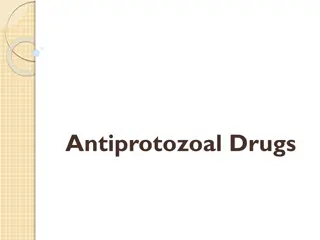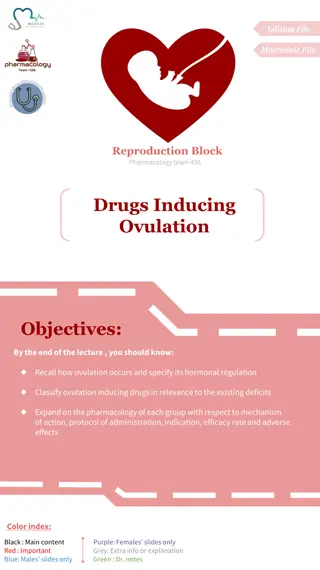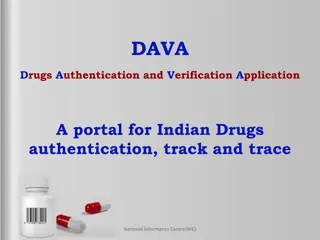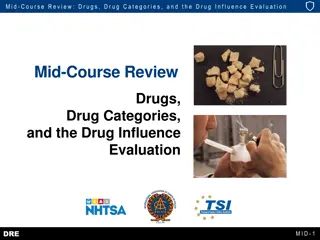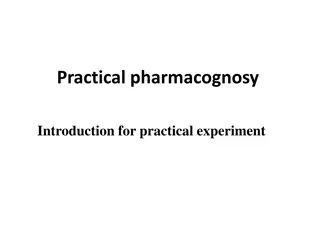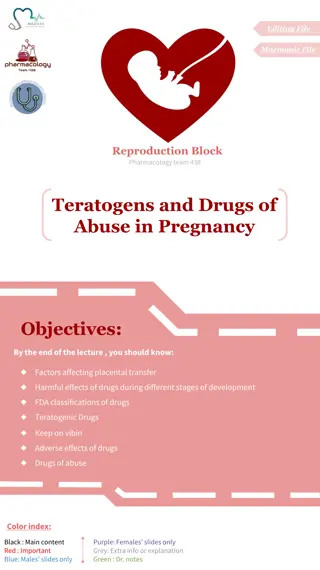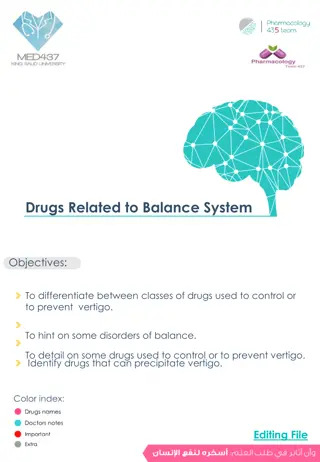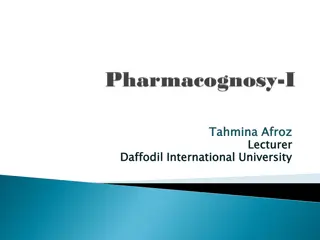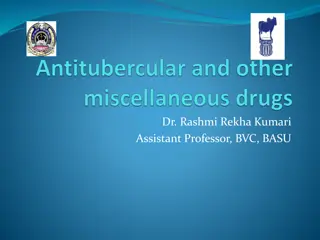Antiemetic drugs
Antiemetic drugs act on brainstem vomiting centers to control nausea and vomiting, which can result from various conditions. The chemoreceptor trigger zone plays a key role in eliciting vomiting responses through afferent impulses from different organs. Explore the complex interactions of neurotransmitters involved in the emetic process and learn about the consequences of uncontrolled vomiting on health.
Download Presentation

Please find below an Image/Link to download the presentation.
The content on the website is provided AS IS for your information and personal use only. It may not be sold, licensed, or shared on other websites without obtaining consent from the author.If you encounter any issues during the download, it is possible that the publisher has removed the file from their server.
You are allowed to download the files provided on this website for personal or commercial use, subject to the condition that they are used lawfully. All files are the property of their respective owners.
The content on the website is provided AS IS for your information and personal use only. It may not be sold, licensed, or shared on other websites without obtaining consent from the author.
E N D
Presentation Transcript
The brainstem vomiting center coordinates the complex act interactions with cranial nerves VIII and X and neural networks in solitarius that control respiratory, salivatory, and vasomotor centers. High concentrations of muscarinic M 1 , histamine H 1 , neurokinin 1 (NK 1 ), and serotonin 5-HT 3 identified in the vomiting center. of vomiting through the nucleus tractus receptors have been
Vomiting occurs due to stimulation of the emetic (vomiting) center situated in the medulla oblongata. Multiple pathways can elicit vomiting. The chemoreceptor trigger zone (CTZ) located in the area postrema and the nucleus tractus solitarius (NTS) are the most important relay areas for afferent impulses arising in the g.i.t, throat and other viscera.
The CTZ is also accessible to blood-borne drugs, mediators, hormones, toxins, etc., because it is unprotected by the blood-brain barrier. Cytotoxic drugs, radiation and other g.i. irritants release 5-HT from enterochromaffin cells in the gut acts on 5-HT3 receptors present on vagal afferents and sends impulses to NTS and CTZ.
Nausea and vomiting may be manifestations of a wide variety of conditions, including: adverse effects from medications; Systemic disorders or infections;. Pregnancy. vestibular dysfunction. central nervous system infection or increased pressure; peritonitis; hepatobiliary disorders. radiation or chemotherapy; Gastrointestinal obstruction, dysmotility, or infections.
Nausea and vomiting can results in: affects quality of life. can also lead to rejection of potentially curative chemotherapy. uncontrolled vomiting can produce dehydration, profound metabolic imbalances, depletion. and nutrient
Emetic actions of chemotherapeutic agents Chemotherapeutic agents can directly activate the medullary CTZ or vomiting center. Several neuroreceptors, receptor type 2 and serotonin type 3 (5-HT3), play critical roles. color or smell of chemotherapeutic drugs (and even stimuli associated with chemotherapy) can activate higher brain centers and trigger emesis. including dopamine
Chemotherapeutic drugs can also act peripherally by causing cell damage in the GI tract and by releasing serotonin from the enterochromaffin cells of the small intestine. Serotonin activates 5-HT3 receptors on vagal and splanchnic afferent fibers, which then carry sensory signals to the medulla, leading to the emetic response.
Identification of the different neurotransmitters involved with emesis has allowed development of a diverse group of antiemetic agents that have affinity for various receptors. Combinations of antiemetic agents with different mechanisms of action are often used, especially in patients with vomiting due to chemotherapeutic agents.
CLASSIFICATION 1. Anticholinergics: Hyoscine, Dicyclomine 2. H1 antihistaminics: Promethazine, Diphenhydramine, 3. Neuroleptics Chlorpromazine, Prochlorperazine, 4. Prokinetic drugs: Metoclopramide, Domperidone 5. 5-HT3 antagonists: Ondansetron, Granisetron 6.Adjuvant antiemetics: Dexamethsone,Benzodiazepines.
5-HT3 receptor blockers: ondansetron , granisetron , palonosetron . block 5-HT3 receptors in the visceral vagal afferent fibers) and in the brain (CTZ). treating emesis linked with chemotherapy, largely because of their longer duration of action and superior efficacy. These drugs can be administered as a single dose prior to chemotherapy (intravenously or orally).
prevent emesis in 50% to 60% of cisplatin-treated patients. useful in the management of postoperative nausea and vomiting.
5-HT3 antagonists are extensively metabolized by the liver. only ondansetron requires dosage adjustments in hepatic insufficiency. Elimination is through the urine. Electrocardiographic changes, such as a prolonged QTc interval, can occur with dolasetron and high doses of ondansetron. For this reason, dolasetron is no longer approved for CINV prophylaxis.
Substituted benzamides: metoclopramide is effective at high doses against the emetogenic cisplatin, preventing emesis in 30% to 40% of patients and reducing emesis in the majority of patients. Metoclopramide accomplishes inhibition of dopamine in the CTZ. Antidopaminergic side extrapyramidal symptoms, limit long-term hig use. Metoclopramide was prokinetic drug for the treatment of GERD. this through effects, including previously used as a
Domperidone It is a D2 antagonist, chemically related to haloperidol, but pharmacologically related to metoclopramide. It has a lower ceiling antiemetic and prokinetic actions. Domperidone crosses blood-brain Accordingly, extrapyramidal side effects are rare. However, it does act on CTZ which is not protected by blood-brain barrier, though antiemetic efficacy is lower than metoclopramide. Side effects of domperidone are much less than with metoclopramide: dry mouth, loose stools, headache, rashes, galactorrhoea. barrier poorly.
ANTIDIARRHEALS Increased motility of the GI tract and decreased absorption of fluid are major factors in diarrhea. include antimotility agents, Antidiarrheal adsorbents and drugs that modify fluid and electrolyte transport. Antidiarrheal agents may be used safely in patients with mild to moderate acute diarrhea. drugs
should not be used in patients with bloody diarrhea, high fever, or systemic toxicity They should be discontinued in patients whose diarrhea is worsening despite therapy. Antidiarrheals are also used to control chronic diarrhea caused by such conditions as irritable bowel syndrome (IBS) or inflammatory bowel disease (IBD).
A.Antimotility agents (OPIOID AGONISTS) Diphenoxylate and loperamide . Both are analogs of meperidine and have opioid-like actions on the gut. They activate presynaptic opioid receptors in the ENS to inhibit acetylcholine release and decrease peristalsis and lead to increased colonic transit time and fecal water absorption. At the usual doses, they lack analgesic effects. can contribute to toxic megacolon, they should not be used in children or in patients with severe colitis.
Loperamide is a nonprescription opioid agonist that does not cross the blood-brain barrier and has no analgesic properties or potential for addiction. Tolerance to long-term use has not been reported. Diphenoxylate is a prescription opioid agonist that has no analgesic properties in standard doses; however, higher doses have central nervous system effects, and prolonged use can lead to opioid dependence. Commercial preparations amounts of atropine to discourage overdosage. commonly contain small
LAXATIVES Laxatives are commonly used for constipation to accelerate the movement of food through the GI tract. These drugs can be classified on the basis of their mechanism of action. Laxatives increase the potential for loss of pharmacologic effect of poorly absorbed delayed- acting, and extended-release oral preparations Many of these drugs have a risk of dependency for the user.
A. Irritants and stimulants 1. Senna: This agent is a widely used stimulant laxative. group of sennosides, a natural complex of anthraquinone glycosides. senna causes evacuation of the bowels within 8 to 10 hours. It also causes water and electrolyte secretion into the bowel. In combination products with a docusate containing stool softener, it is useful constipation. 2. Bisacodyl: Available as suppositories and enteric-coated tablets, bisacodyl is a potent stimulant of the colon. It acts directly on nerve fibers in the mucosa of the colon. in treating opioid-induced
3. Castor oil: This agent is broken down in the small intestine to ricinoleic acid, which is very irritating to the stomach and promptly increases peristalsis. Pregnant patients should avoid castor oil because it may stimulate uterine contractions.
B. Bulk laxatives The bulk laxatives include hydrophilic colloids (from indigestible parts of fruits and vegetables). They form gels in the large intestine, causing water retention and intestinal increasing peristaltic activity. Similar actions are produced by methylcellulose, and bran. They should be used cautiously in patients who are immobile because of their potential for causing intestinal obstruction. distension, thereby
C. Saline and osmotic laxatives Saline cathartics, such as magnesium citrate and magnesium hydroxide, (anions and cations) that hold water in the intestine by osmosis. This distends the bowel, increasing intestinal activity and producing defecation in a few hours. Electrolyte solutions containing polyethylene glycol (PEG) are used as colonic lavage solutions to prepare the gut for radiologic or endoscopic procedures. are nonabsorbable salts
PEG powder for solution is available as a prescription and also as an over-the-counter laxative and has been shown to cause less cramping and gas than other laxatives.
Lactulose is a semisynthetic disaccharide sugar that acts as an osmotic laxative. It cannot be hydrolyzed by GI enzymes. Oral doses reach the colon and are degraded by colonic bacteria into lactic, formic, and acetic acids. This increases osmotic accumulation, colon distension, defecation. Lactulose is also used for the treatment of hepatic encephalopathy, due to its ability to reduce ammonia levels. pressure, causing stools, fluid and soft
D. surfactants) Surface-active agents that become emulsified with the stool produce softer feces and ease passage. These include docusate sodium and docusate calcium. They may take days to become effective and are often used for prophylaxis rather than acute treatment. Stool softeners (emollient laxatives or
E. Lubricant laxatives Mineral oil and glycerin suppositories are lubricants and act by facilitating the passage of hard stools. Mineral oil should be taken orally in an upright position to avoid its aspiration and potential for lipid or lipoid pneumonia
